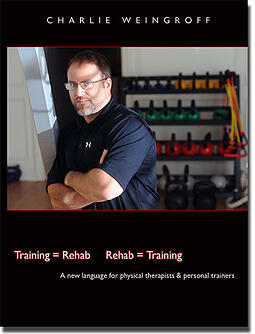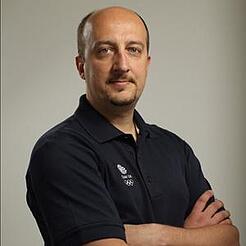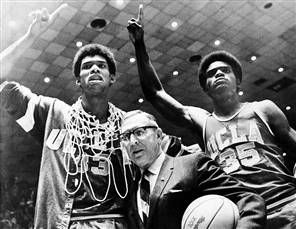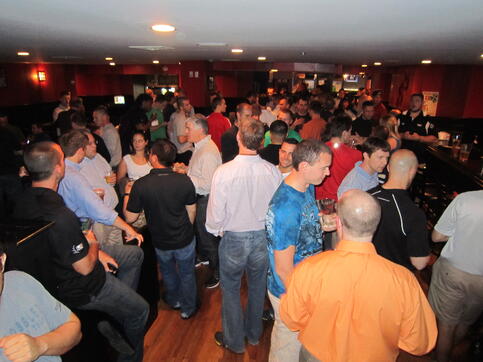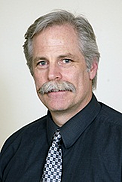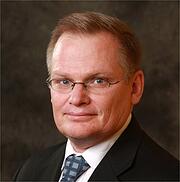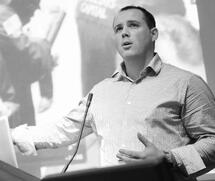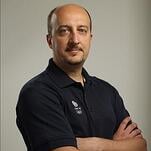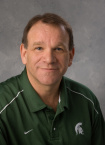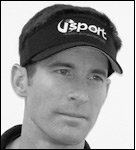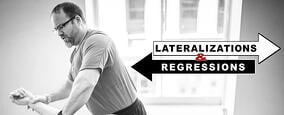by Art Horne
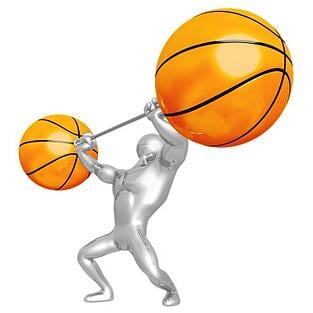
Just recently Dr. Stuart McGill, Jordan Andersen, and I published an article in the Journal of Strength and Conditioning Research examining the link between traditional pre-season strength, fitness, and sports medicine testing to overall on-court basketball performance and injury resilience throughout the course of two collegiate basketball seasons. Although I would be the first to admit that there are some clear limitations to this study (number of participants for example), key performance predictors (points scored, ability to rebound, block shots, etc) were NOT associated with traditional strength or performance measures so often pursued in collegiate basketball strength programs.
Key performance predictors (points scored, ability to rebound, block shots, etc) were NOT associated with traditional strength or performance measures.
Below you’ll read a few of our findings followed by my thoughts on how to best train these attributes that correlated to actual on-court success as well as address common injuries found both in our study and in general among basketball athletes. Findings are in bold, with narrative following in normal text.
First things first. All strength exercises described below must be built on a solid foundation. To quote Gray, “you can’t put strength on dysfunction.”
Move well, and then Move often.
You wouldn’t build a house on swamp land, so don’t even try to start squatting the basketball athlete before you’ve assessed him for the ability to even perform such a movement with his own body weight. This seems logical to most, but you’d be surprised at the number of coaches who first neglect this fairly obvious rule and bury their athletes under the bar. This rule needs to be applied to all exercises that carry a load, not just the squat. Prove to me that you can handle 1x your body weight and then we can talk about you moving an outside load.
For the sake of argument, we’ll assume the methods below are being applied to a basketball athlete who has been assessed and has passed their movement screen/assessment and has no current pain or past medical condition.
1. A “stiffer” torso leads to better performance
Again, this goes without saying.
Many people automatically associate spine stiffness to side planking for some reason but this couldn’t be further from the truth. The ability to Side Plank or perform a Front Plank are merely two exercises in the large core stability family. Including these traditional exercises along with the chops and lifts, anti-rotation exercises such as the Keiser Belly Press (or Paloff Press), Bird-dog exercises and the Tall Kneeling or standing Single Arm Keiser Chest Press along with Anti-Extension exercises including any variation of roll outs are a staples within any comprehensive yearly training program. But you already knew that – what you may be missing are the following:
a. Rolling - Assessment and activation of the deep core stabilizers: Before addressing the core as described below, one must ensure that the intrinsic musculature immediately surrounding the spine are functioning properly. Assessing rolling patterns in your athletes is an easy check and certainly worth the investment of time. Checking both upper and lower rolling patterns – supine to prone and prone to supine prior to undergoing a long rehabilitation or performance program and addressing deficiency in this area will save you an enormous amount of frustration later on.
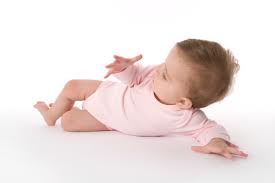
b. Carries: This is a must in every rehabilitation and sports performance program – period. I’ve witnessed firsthand athletes returning to competition after a knee injury who were unable to perform a single leg squat on initial evaluation, only to bury it moments after a few minutes of suitcase carries. For sports performance coaches, this has been described by McGill a number of times and specifically to the Yolk walk that strongmen competitors compete in.
“Every time I work with top international athletes I learn more about athleticism. We have all heard that having a strong core increases strength elsewhere in the body. Experience tells us this is true but I was incomplete in my explanation of the mechanism. I enhanced my education a couple of years ago following my analysis of “strongman event” competitors.
First we measured the athlete’s strength capabilities – hip abduction being one of them. Then we quantified the tasks, strength demands and joint mechanics in various events. Curiously they needed more hip abduction strength to succeed in events such as Super Yoke and the Suitcase carry than they could create in their hips. How could they perform a feat of strength that was beyond what a joint could produce?
Consider the Super Yoke where several hundred pounds are carried across the shoulders. The axial load down the spine traverses across the pelvis to the support leg allowing the other leg to step and swing. Hip abduction is needed to lift the pelvis laterally but clearly the strength required far exceeded what the hip could create. The missing strength came from the core muscles (quadratus lumborum and the abdominal obliques on the swing leg side) which helped lift the pelvis. Now consider the footballer who plants the foot on a quick cut. A strong and stiff core assists the hip power to be transmitted up the body linkage with no energy losses resulting in a faster cut. This is the same performance enhancing mechanism as in the Super Yoke but it is not traditionally trained in the weight room.
This experience resulted in the search for the best training approach. We quantified asymmetric carries such as the suitcase carry and found that quadratus and the abdominal wall were challenged to create this unique but essential athleticism. However, working with Pavel we tried kettlebell carries (just in one hand). Racked traditionally with the bell carried on the back of the forearm (with the hand position tucked in close to the chest as if the athlete were to begin an overhead press) helps to reduce shoulder impingement should this be an orthopaedic issue. However, even better was the bottom up carry. Here the bell is held upside down in the bottom up position with the elbow tucked close to the body and the bell beside the head. The core is stiffened to control the bell and prevent it from rotating in the hand. Now walk briskly. Core stiffness is essential to prevent the loss of the bell position.
I consider that every general program to enhance athleticism needs a carry task. “ (McGill, personal communication)
-
Integrate Suitcase Carries, Farmer Walks or Bottoms Up Kettlebell Carries in all of your training programs – every time!
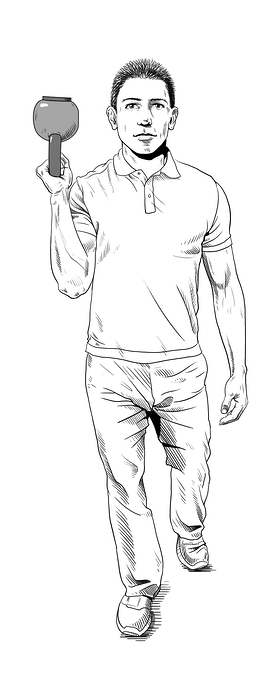
c. Training to Relax: it appears that rate of force development is not the only end to which we should direct our training methodologies. Training to improve RATE OF RELAXATION may be just as, or more important. For additional resources on this subject see below.
- Read Cal’s Book, TRIPHASIC TRAINING, specifically page 306 and the section on Antagonistically Facilitated Specialized Method (AFSM).
d. Breathing through the brace: Spine stiffness is intimately related to diaphragm function, and as such, training the diaphragm to operate as both a Respirator and Stabilizer is of the upmost importance. This is especially important for the Forwards banging down on the post while sucking wind in the fourth quarter. Learn more about “Breathing Through The Brace” and Diaphragm function HERE.
2. Bench Press correlated with blocks per game
Upper body strength is important for basketball – period (at least for the bigs)
Another note on Kevin Durant and others like him: Remember – skill is king. If you are just better than everyone and can score whenever you want, whether you can bench press or not really doesn’t matter. However, if you’re working with a kid that has marginal skill and could use some additional size and strength to compliment this game here are some suggestions for going about doing it that will also have some actual transfer to his performance on the court – and no, none of the suggestions involve bench pressing more. In fact, absolute strength may not be important at all. Sparq Data from 17-19 year olds showed the Power Pass (ability to chest pass a medball) to be highly correlated to those that went on to scholarships and international contracts, whereas NBA draft data from 2007-2009 showed bench press to be one of the lowest! (Nike Sparq data)
- Standing single arm horizontal presses may be better than lying flat on your back under a bar. I know you can’t move as much weight standing, but that’s kind of the point. In fact, you’ll only be able to press about ½ of your body weight before you are pulled backwards and around. This is because the limiter in this exercise is not upper body strength but the ability to stop trunk rotation – an important aspect in the game of basketball! If you can’t pull yourself away from writing bench press into your programs at least add a tall kneeling or standing horizontal cable single arm press as a supplemental exercise.
- An even better exercise is described by McGill HERE, in which you perform a dumbbell chest press with only ½ your body on the bench and press with the arm on the side that is unsupported. This forces the unsupported side – hip/gluteal & hamstring with anti-rotational core stiffness that will allow for stability necessary to generate pushing power in conjunction with upper body strength (CraigLiebenson.com).
- Crawling: enhancing “functional” upper body basketball strength, or strength that can be used in any sport for that matter starts on the ground. I’ve seen athletes time and time again lying flat on their back performing the bench press exercise that can’t even perform a push-up without looking like a wet noodle. Stay on the ground instead of “deloading” their bodyweight and placing them on their back. Remember – you need to be able to handle 1x your bodyweight before moving on to loading that pattern. Crawling and performing push-ups in multiple directions and with multiple hand placements are an excellent way to develop the strength needed to battle for the boards while also integrating the core musculature. Examples include:
Inchworm, Lateral push-ups, Hand Walk-outs, Bear Crawls (forward, back and side to side)
3. Long Jump distance and Lane Agility Test were the most closely linked performance tests linked to actual performance
Let’s break each one of these points down into their individual components.
i. Long Jump scores correlated with: minutes, rebounds, and blocks per game: and thus, an effort must be made to address this horizontal power component in your training program. Here’s how.
- Trap Bar Deadlift: Listen, basketball guys aren’t interested in strength training – sorry to break the news. This was a really hard thing for me to understand when I was younger and for a long time refused to believe that basketball athletes didn’t love moving weight – THEY DON’T! With that said, the trap bar deadlift might be one of the best exercises for the basketball athlete – here’s why......It’s not the squat!
Listen, I think basketball athletes should squat and squat often, but unfortunately it often places the basketball athlete into a movement pattern that they perform a thousand times a day already and as such, might not be appropriate for the entire team, all the time as opposed to the deadlift which almost all guys (even guys with knee pain) can perform. If you’re going to squat your athletes (good by the way!), be sure to at least add the deadlift into the mix (and when I say add to the mix, I mean add it a lot!)
-
Trap Bar Deadlifts are easier to teach and execute than traditional barbell deadlifts from the floor. Holding a bar to the sides is far easier than scraping your shins when holding a bar from the front. We’re not here to teach kids to become great dead lifters, or compete in the Olympics. They’re in your weight room to become better basketball athletes – period. Trap Bar Deadlifts are the fastest, easiest, and safest means to that end.
Remember: the goal is to keep the goal the goal.
1.Deadlifting establishes a proper hip hinge pattern which separates your lumbar spine from your hips. If ankle and knee pain don’t end your career, low back pain will. Avoid back pain by mastering this movement and recruiting the massive muscles on your “backside” instead of the muscle in your lumbar spine 2. Holding the bar to the side makes it easier to centrate and “pack your shoulder” joint while also recruiting the large lumbar spine stabilizer called your lats (another great reason to perform this exercise). Teaching kids to “screw in their shoulder” or “pack their shoulder” will carry over to other exercises while also keeping their shoulder joints free from pain. Side note: perform in barefeet to encourage awareness of foot position, strengthen the intrinsic musculature of the foot and ankle, and get them out of those darn basketball shoes for at least a minute.
- Deadlifting promotes more horizontal power development than the squat – read above – “long jump scores correlated with rebounds and blocks per game” – that’s a good thing! Rebounding and blocking shots not only involve jumping up, but also jumping outwards to meet the ball. Both strength qualities must be developed in my opinion and the deadlift is your money maker for the horizontal component.
- Kettlebell Swings: Now that you’ve established the necessary strength from the deadlift and have earned the right to pull from the floor, harnessing that strength and moving weight fast is the next challenge. As Cal Dietz has mentioned many times, not a single exercise that we perform in the weight room even approaches the speed at which your limbs move during the course of a basketball game. Although not able to reproduce this speed per se, the kettlebell swing does teach the body to contract and relax – and that is what elite sport is all about! In addition, when performed correctly (sorry cross-fit but swinging the bell up over your head is a bad idea), the motion is almost purely horizontal, and contributes to a big broad jump.
ii. Lane Agility time correlated negatively with minutes played, points, assists and steals per game (meaning that a faster time was linked to more performance)
i. These are the guys with the stiffer torso’s, the guys that are able to “relax” quickly (again read Cal’s book), and the guys that are able to put force into the ground to change direction. So how do I do this:
- Stiffer Torso: Re-read torso training above
- Ability to relax: Read Cal Dietz’s book, specifically part on “AFSM” training, pages 306 to 313.
- Force into the ground: Get Strong! I’m not quite sure how else to say this but moving heavy weight is necessary. Although there is some argument as to the amount of strength needed to be successful in sport, it is rare to find a basketball athlete that has achieved top end strength and as such, can always improve their biomotor abilities by the addition of more absolute strength. This strength however needs to be multi-planer. This is much different than training track athletes that simply move in a straight line. Performing lunges at various angles or squats in varying foot positions (sport squat vs. power lifting stance) will translate to improved on-court success.
iii. Vertical Jump did not correlate with any variable below
- This is a bit of a misnomer in my opinion and here’s why. Vertical jump is important, especially the ability to repeat these jumps over and over. Although it wasn’t correlated in this limited study, I think we’d all agree that you need a big vertical jump if you want to play at the highest level (college or professionally). One attribute more important than jumping high however is the ability to put the ball in the bucket. I don’t care if it’s from beyond the arc or if you pull up in the paint. If you can score when you want to you will play! The trend that I have seen over the years unfortunately is that our best leapers are never our most skilled players. For some reason, most natural leapers feel like that attribute alone will get them through to the next level and thus, simply fail to develop their full skill set. Let’s look back at the goal. You need to score more than the other team. So you either have to be a great scorer or a great defender. Vertical jumping will certainly help you some on both ends of the court but you still have to have that silky smooth jump shot in order to reach the highest level.
Keep working on developing your vertical jumping ability, but not at the expense of developing your skill set. Instead of showing off at between classes with your fancy dunks try spending that extra time at the charity stripe working on your foul shots.
Is any of this really important?
If you’re any one of the 3 major universities in Boston providing basketball scholarships for example, you know that you’ve basically committed over a ¼ of a million dollars towards each athlete by the time they graduate. This doesn’t not even account for the large number of support staff (academic support, athletic trainers, strength coaches, etc.) that invests their time above and beyond to help these young men. If more strength coaches and athletic trainers saw each athlete as a dollar figure, or a loss of potential “revenue” when injured perhaps then each would look to address faulty movement patterns and their contributing factors prior to injury rather than throwing their hands up afterwards in frustration. I don’t think it’s fair to put a dollar figure on an 18 year old kid – but I do think that it’s a nice exercise to clearly illustrate the massive investment institutions are making in their athletes and athletic programs, and one that will resonate with those professionals that provide services to these athletes. Providing sports medicine care means more than applying ice and e-stim after injury and strength & conditioning requires more than simply loading a bar. Both professionals, need to understand that they currently have over 3 million dollars of “product” on their roster right now (13 scholarships), and that their actions and inactions contribute directly to the rise and fall of that value.
Best of luck this coming basketball season!!
References
Dietz C, Peterson B. Triphasic Training: A systematic approach to elite speed and explosive strength performance. 2012.
Nike Sparq Data.
Register Now for the 2013 BSMPG Summer Seminar - May 17 & 18, 2013. See Dr. Stuart McGill and other leaders in Sports Medicine and Performance from around the Globe!



